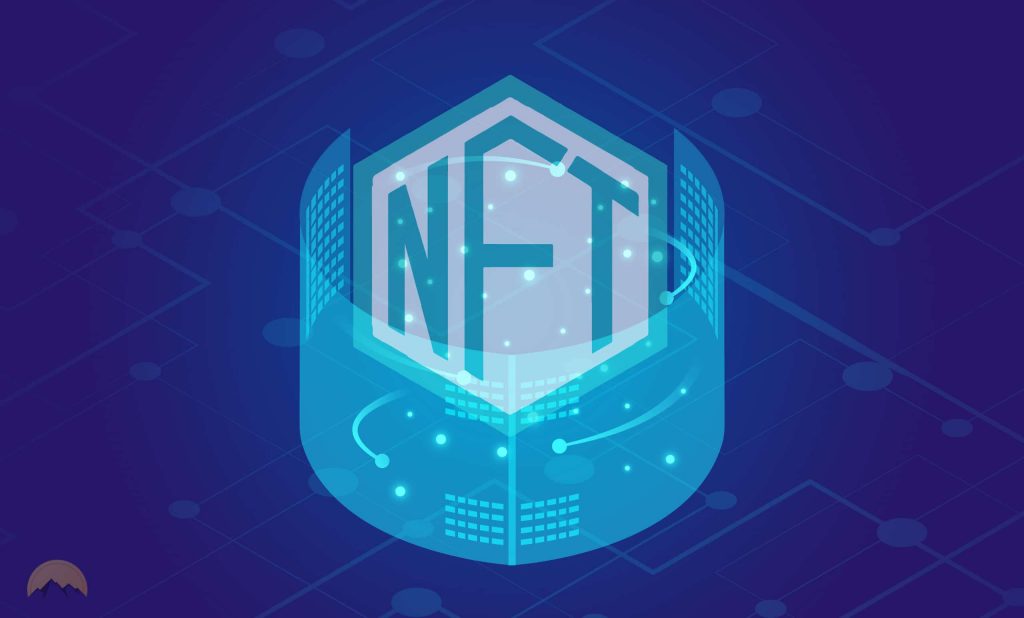Those alluring NFTs
 A non-fungible token (NFT) is a non-interchangeable unit of data stored on a blockchain, a form of digital ledger, that can be sold and traded. Types of NFT data units may be associated with digital files such as photos, videos, and audio. Because each token is uniquely identifiable, NFTs differ from most cryptocurrencies, such as Bitcoin, which are fungible.
A non-fungible token (NFT) is a non-interchangeable unit of data stored on a blockchain, a form of digital ledger, that can be sold and traded. Types of NFT data units may be associated with digital files such as photos, videos, and audio. Because each token is uniquely identifiable, NFTs differ from most cryptocurrencies, such as Bitcoin, which are fungible.
NFTs are still a relatively new movement in digital consumerism. However, their impact has already created a long-lasting effect that will transform the e-commerce market in the years to come, ecommercetimes.com says.
NFTs are individually authenticated, verifiable, and non-interchangeable items. Complete with unique identification and metadata, they are genuine one-of-a-kind objects with only one official owner at any given time.
Well-known brands are willing to invest in NFTs, even at this early stage, because they help boost the user experience, increase brand awareness, and expand opportunities for brand engagement.
The NFT market has experienced 10-times growth over past last two years and market watchers expect the momentum to continue.
New Opportunities
With the adoption of NFTs, both brands and influencers can now create unique content capable of being monetized and enable followers to own a unique collectible piece.
“NFTs can aid a brand’s equity, create publicity for a product launch or brand event, or be used as a form of customer appreciation, serving as a unique custom gift or coupon.
As this trend persists, brands will begin to see that as an entirely new form of revenue, as goods can now be sold in a completely digital format instead of a physical product.
Brands and influencers who partner together to create innovative content will be able to leverage numerous benefits and only strengthen the relationship with each other and their audiences.
NFTs and Crypto Money
NFTs and cryptocurrencies are both based on blockchain that uses similar innovations and standards. They both draw on a similar target market but they differ.
NFTs are like a subsidiary of crypto, as they can be traded and sold but with a cryptographic form of money.
The main distinction between the two is indicated in the name. Cryptocurrency is a currency, and that means, just like other currencies, it is fungible and only has monetary value. An individual can trade one bitcoin for another and will still have the same coin.
Essentially this means that with crypto, it does not matter which tokens an owner has. It will ultimately have the same value as the next one, and so forth.
An NFT’s value comes from its uniqueness and the fact that it cannot be equally replaced with something else. NFTs are a one-of-a-kind trade that is non-fungible. So if you traded one NFT for another, it would be completely different.
Non-fungible tokens are not a type of currency that serves as an equal exchange among all holders. Instead, each NFT is unique to each individual who owns it.
How NFTs Work
At a very high level, most NFTs exist on the Ethereum blockchain. Other blockchains can also implement Ethereum’s versions of NFTs, but for the most part, Ethereum is where most of them live.
Ethereum is a cryptocurrency but supports NFTs by storing extra data that allows them to work differently than an ETH coin. NFTs are individually authenticated, verifiable, and non-interchangeable digital items.
Complete with unique identification and metadata, they are genuine one-of-a-kind objects with only one official owner at any given time. They are bought, sold, and traded with this at play.
Driving Factors
Brands can utilize NFTs in mobile advertising campaigns, which can be distributed strategically across different digital outlets and monetized numerous times.
The ultimate usefulness is giving both brands and influencers the ability to create unique content that is capable of being monetized. This, in turn, enables followers to own a unique collectible piece.
The NFT market is not just an option for those who are internet-savvy. NFTs hold the key to creating a widely accessible and transformative market for all individual creators. Even though the accessibility is high, the awareness and relevance of NFTs are still relatively low for the everyday consumer.
One way to ensure widespread adoption is to have the NFT market be saturated with content that provides relative value to the market itself.
After the pandemic, and with the digital transformation, individuals are now ready to participate in the types of technology that allow for instant, easily accessible, peer-to-peer sharing and that is the point of NFTs.
Why Do We Need Them?
For creators, NFTs serve as an option to sell unique work to a market that has never existed before. Plus, it allows for more awareness and visibility of the corresponding product than ever before.
NFTs also have a feature that creators can enable which pays them a percentage every time the NFT is sold or traded, ensuring that if the creator’s design becomes popular, they will reap some of the benefits.
Consumers want NFTs for several reasons. First and most apparent is that buying art allows you to financially support artists and own designs you like while retaining fundamental and unique usage rights.
Besides, you get the fantastic bragging rights of owning your unique NFT.
If consumers wish to take the investment route, NFTs can also work like any other art asset. The consumer purchases the piece with the hopes that the value will continue to increase, and one day it can be traded or sold for a profit.
NFTs are starting to introduce in a new form of social commerce that empowers creators, consumers, and brands. They allow small businesses to harness public blockchains for producing digital goods.
This ability can be delivered instantly to a crypto wallet. An NFT is a one-of-a-kind digital object that serves as an authentic way for customers to make a profit from the retail platform.
The number of options of what an NFT can be is always growing and has already enabled many creators to flesh out their own innovative ideas. This creates an opportunity for brands and influencers to work together like never before.
From videos to virtual houses, music, artwork, online races, and digital collectibles, NFTs continue to grow in originality and type. Additionally, the number of marketplaces that sell NFTs is only increasing, meaning all of this is just the beginning, he predicted.
The most significant takeaway for brands and influencers is that NFTs are not simply a recent trend or the latest fad. They are impressive digital entities that exist solely in the digital ecosystem but supply value in the real world.
As our culture becomes more and more focused on digital, NFTs will increase as organizations and people use them as investment opportunities for the new virtual climate.


Latest News